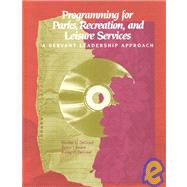Servant leadership is based on the premise that all recreation providers serve their customers through programs. The servant leadership approach simultaneously enhances the personal growth of workers and improves the quality and caring of our many institutions through a combination of teamwork and community, personal involvement in decision making, and ethical and caring behavior.
Whether a leisure services professional works for a municipal recreation department providing recreational sports leagues for adults, or for a nonprofit organization providing special events, or as a commercial tour operator offering wilderness backpacking trips, Programming for Parks, Recreation, and Leisure Services: A Servant Leadership Approach provides both cutting-edge concepts and p








